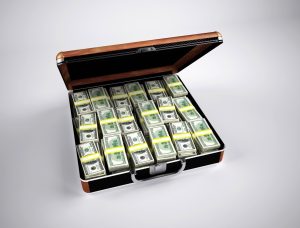The assassination of King of Saudi Arabia Shah Faisal is one of the brutal rifts in the House of Saud. On the 12th of Rabi-ul-Awwal that year, King Faisal of Saudi Arabia was meeting the people. A Kuwaiti delegation was waiting to meet him in the waiting room.
Shah Faisal’s nephew Faisal bin Masaad was engaged in talks with the Kuwaiti delegation. When the time came for the delegation to meet, Shah Faisal proceeded to kiss his nephew Faisal bin Masaad. At that moment, the nephew suddenly pulled out a revolver from his hubby and shot Shah Faisal twice. The bomber struck shortly afternoon in front of a police recruiting centre.
It is said that a third bullet was fired which did not hit him. One of the Shah’s bodyguards struck Faisal bin Mas’ad with a sword, which was still in its sheath. The country’s petroleum minister, who was present, shouted at the guard not to kill the prince. Faisal bin Masaad stood there contentedly and was arrested by the guards.
Shah Faisal was taken to hospital but succumbed to his injuries and died.
Analysis by Saudi Journalist
Rashid Hussein, an analyst who has been a journalist in Saudi Arabia for more than two decades, was well acquainted with a man who was standing very close to King Faisal when the incident occurred. The man was Ahmed Zaki Yamani, the then oil minister, who was introducing the OPEC delegation, which included the Kuwaiti minister, to Shah Faisal.
“It is possible that the security screening that used to take place did not take place,” says Rashid Hussain. When the shot was fired, people thought it was Ahmed Zaki Yamani. Because he was the first to go and catch Faisal bin Masaad.
The head of Faisal bin Masaad, the assassin of King Faisal bin Abdulaziz bin Abdul Rahman Al Saud – was publicly beheaded on June 18 of that year at the largest square in Riyadh, the capital of Saudi Arabia.
Who was Faisal bin Masaad?
Faisal bin Masaad was the son of Shah Faisal’s half-brother Masaad bin Abdul Aziz.
Faisal bin Masaad was born on April 4, 1944. He was executed on June 18, 1975, for the assassination of Shah Faisal, and was beheaded a few hours later in front of a packed crowd in Riyadh’s Central Square.

Not much has been written about Faisal Masaad’s life. Faisal bin Masad went to the United States to study, where he enrolled at San Francisco State College. He also studied at the University of California and the University of Colorado.
After the assassination of Shah Faisal, it was initially said that he was suffering from “mental imbalance”. In a statement issued after the assassination of Shah Faisal, he was formally described as “insane” by the royal cabinet. But doctors examined and certified that Faisal bin Masaad was mentally fit.
He is also linked to drug cases and is said to have had his passport confiscated once he returned to Saudi Arabia. Because he was causing disgrace to Saudi Arabia abroad.
Why was Shah Faisal killed?
In Saudi Arabia, investigations often go unreported. This issue becomes even more sensitive when it comes to the royal family. Many rumours and speculations arose at the time of the murder but after investigation. It was said that the killer was alone and no one else was involved in the process.
Analyst Rashid Hussain says that what happened on March 25, 1975 needs to be seen in full context.
Death of Faisal bin Masaad’s brother
Initially, it was speculated that the prince shot Shah Faisal to avenge his brother’s death.
When Shah Faisal started television broadcasts in the country. His half-brother and Faisal bin Masaad’s father, Musaad bin Abdul Aziz, along with other religious leaders. They began speaking out against the Shah’s decision and staged protests. In a similar demonstration, police opened fire when protesters began attacking a TV station, killing Musaad bin Abdul Aziz’s eldest son, Khalid Musaad.

“The rulers in Saudi Arabia had great control over religious scholars and they still have,” says Rashid Hussein. When they have to spread a movement, they forcefully call the Maulvis. Probably in the year 65 or 66, when there were attempts to start radio and television. The ulema tried not to do anything without their consent and to keep everything under their control because it is un-Islamic, etc.
“Shah Faisal was a bit progressive in terms of his time. He also started educating women and also started radio and television there. And when that happened, there was a demonstration in Riyadh, led by Faisal bin Masaad’s father (Masaad bin Abdul Aziz) and he belonged to the royal family.
Interestingly, if he had succeeded, he could have overthrown Shah Faisal’s government. In a similar demonstration, protesters tried to break into a TV station in Riyadh – where Faisal bin Mas’ad’s older brother was shot dead by police.
However, even after that, Shah Faisal did not take any decision to stop TV broadcasting completely.
Shah Faisal’s rule and family differences
Before Faisal, King Saud, the eldest son and crown prince of King Abdul Aziz, became king. But Faisal brought a revolution in a way that the country is not running from Shah Saud and forced him to abdicate. Inevitably, there were differences within the royal family. Masaad Sahib also tried to use these differences and tried to create a movement against Shah Faisal by using them, which Shah Faisal dealt with very harshly. Masaad had joined the religious forces there, the Matuos, so that if they were with him, they could win the war. At that time, he could not do anything but a thorn in his side.
Rashid Hussain says that there are always rivalries and differences in the royal family and one of the main reasons for the rivalry against Shah Faisal was that Shah Faisal himself became king by removing Shah Saud.
The Royal Family of Saudi Arabia
The reigning Royal Family of Saudi Arabia has a net value of around $1,4 trillion. It is 16 times that of the Royal Family in the British.
The reigning dynasty derived the majority of its revenue from enormous oil reserves which were established 75 years ago, transforming the wealth of Saud into the richest family in the world.
The House of Saud reports that almost 15,000 royal families reside in luxurious palaces, with a wealth of 1,4 trillion dollars. Saudi Aramco is the state oil business, one of the most wealthy and lucrative corporations in the world, and it constitutes the backbone of the vast Royal Family.













